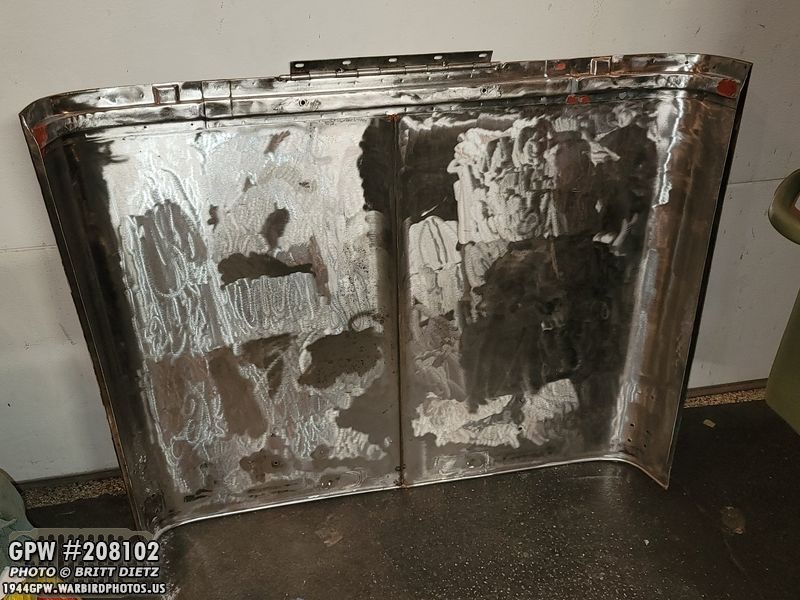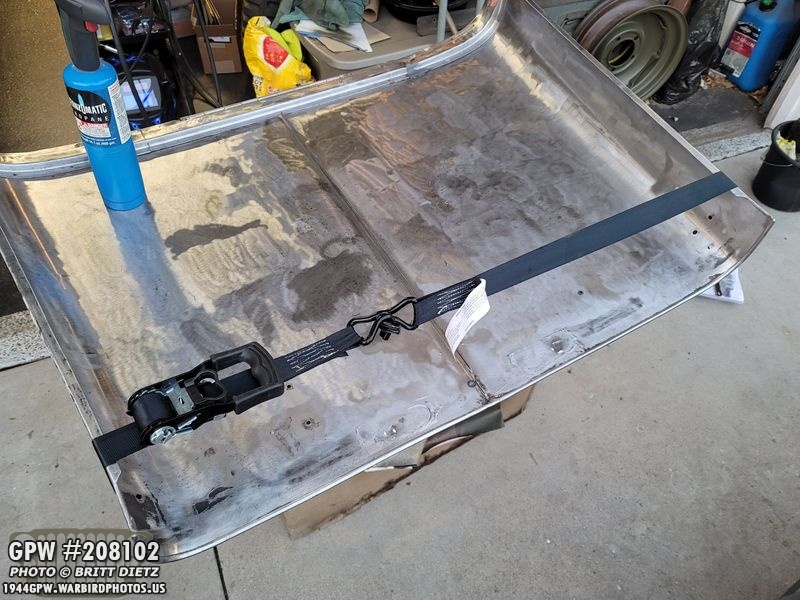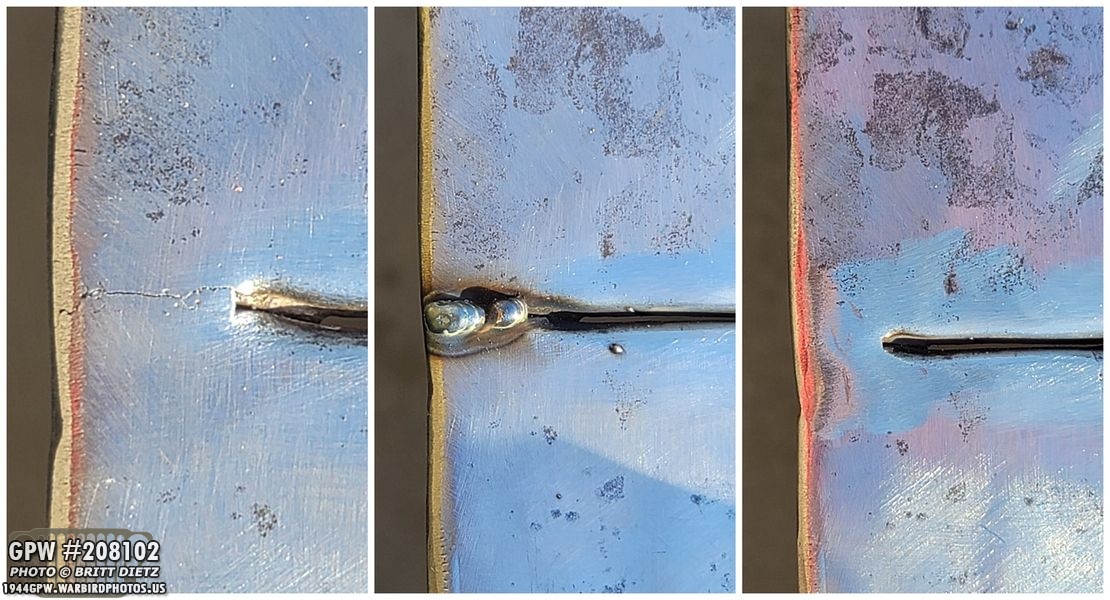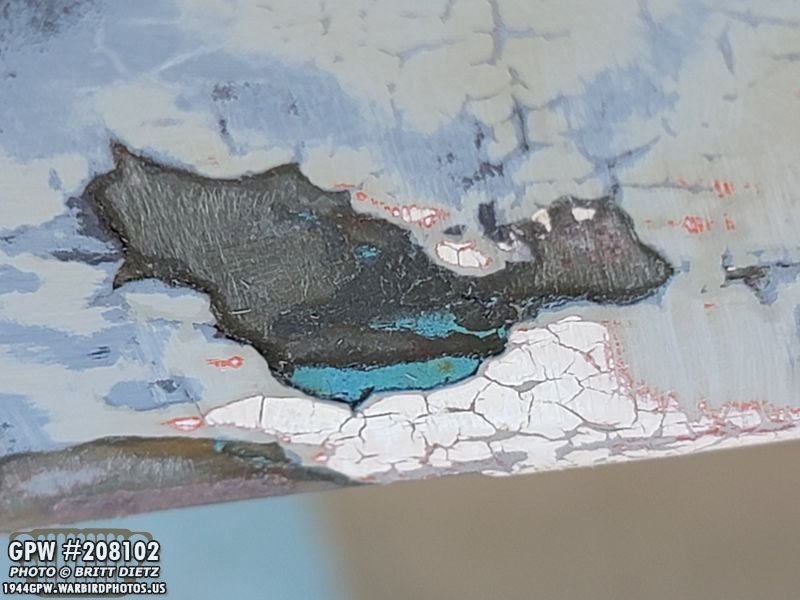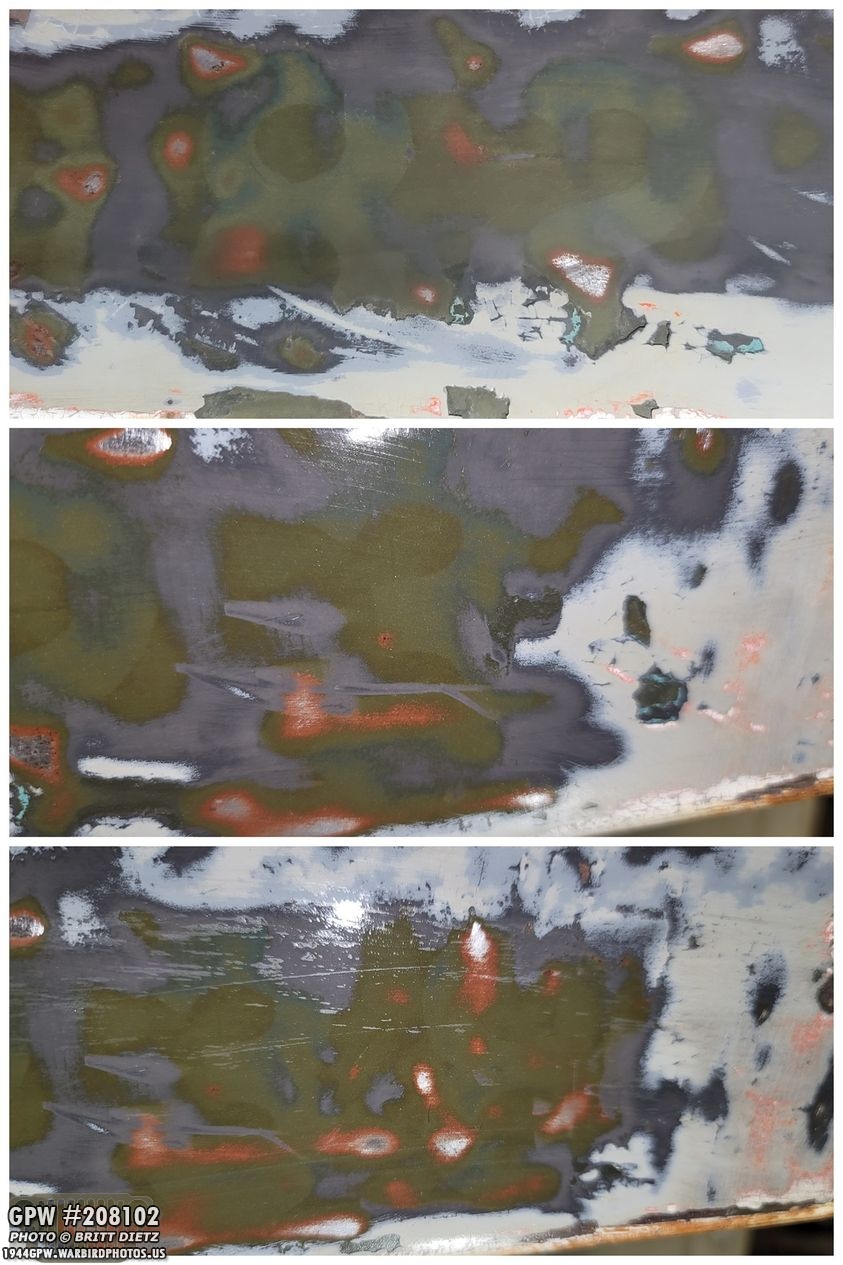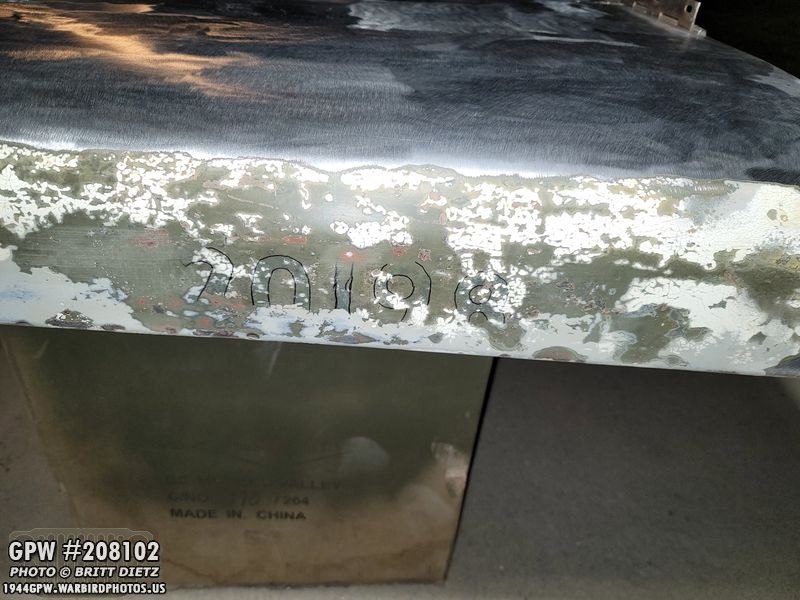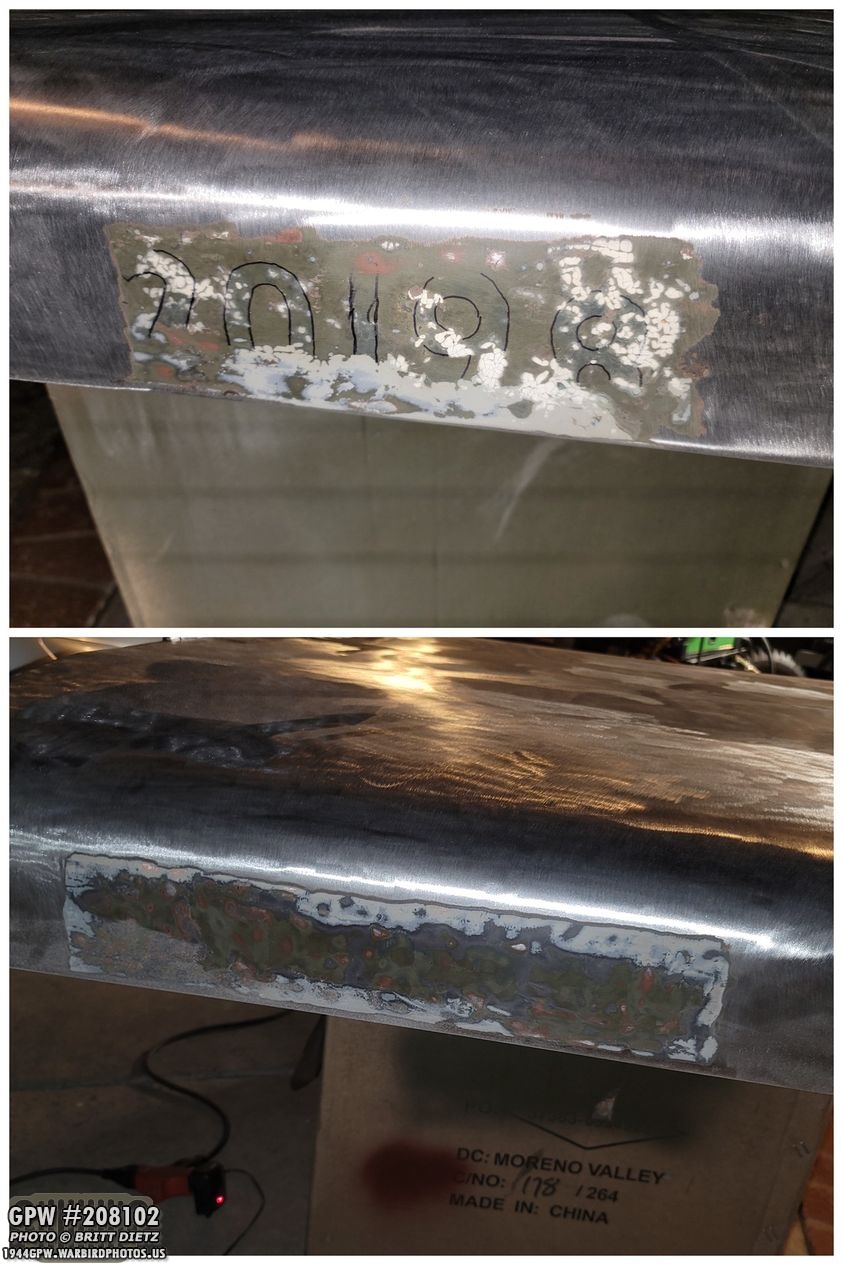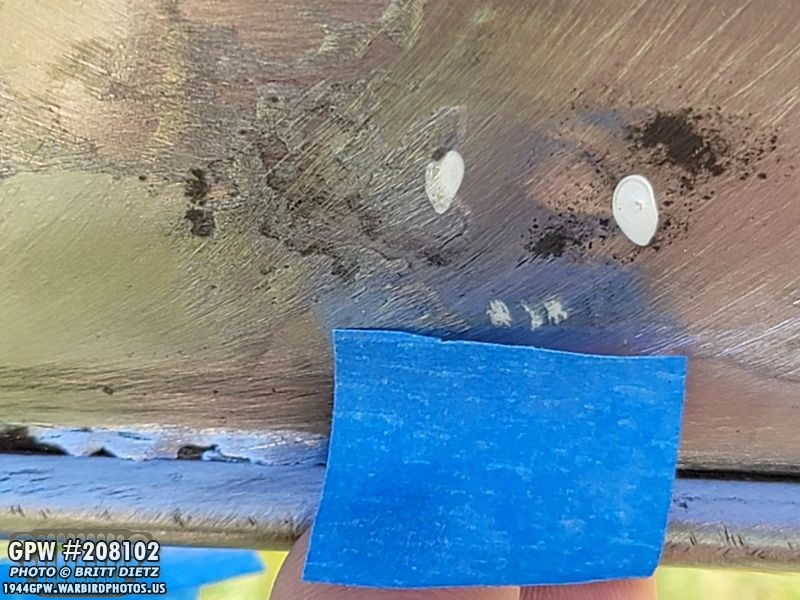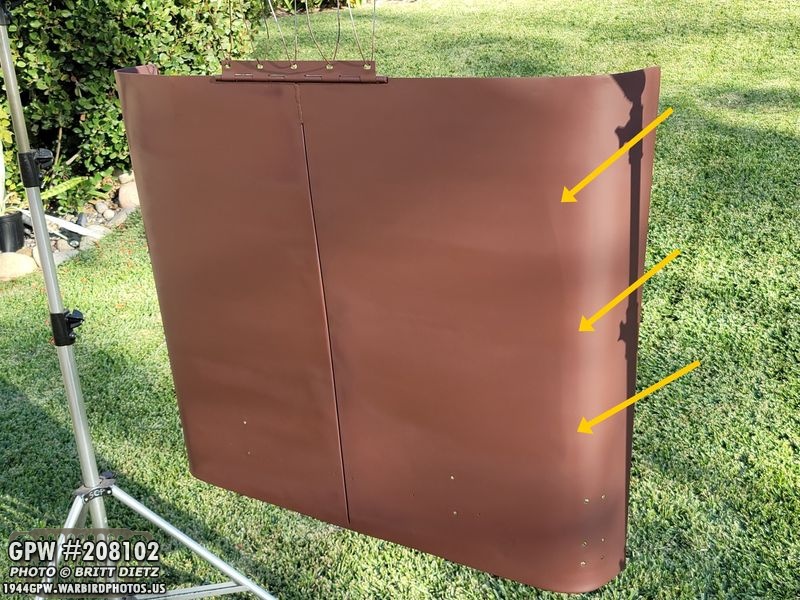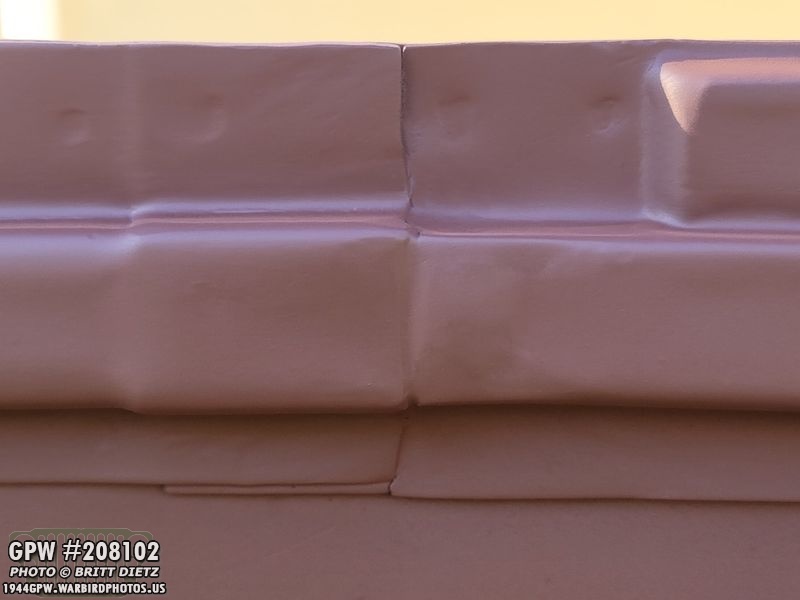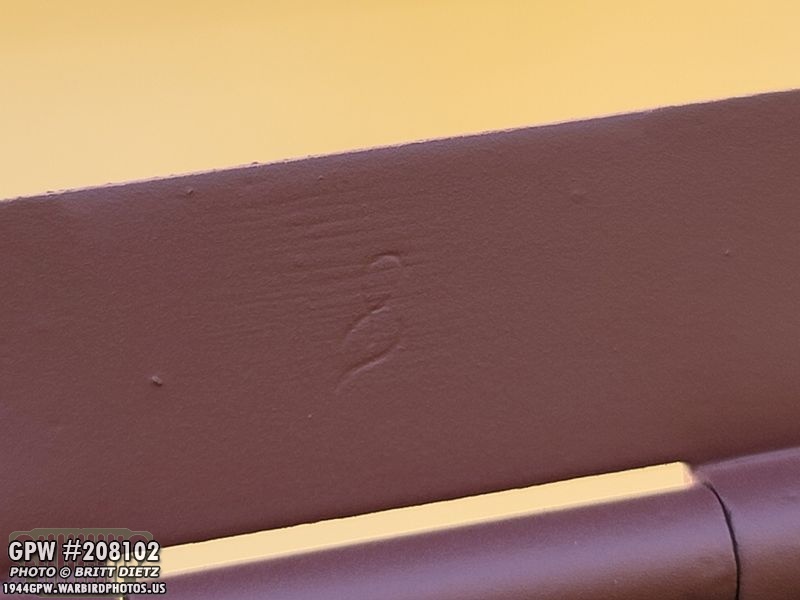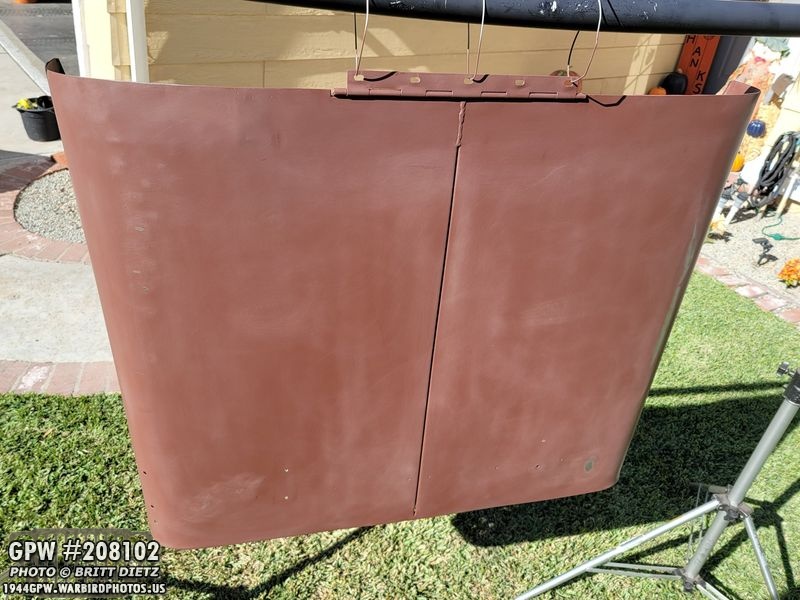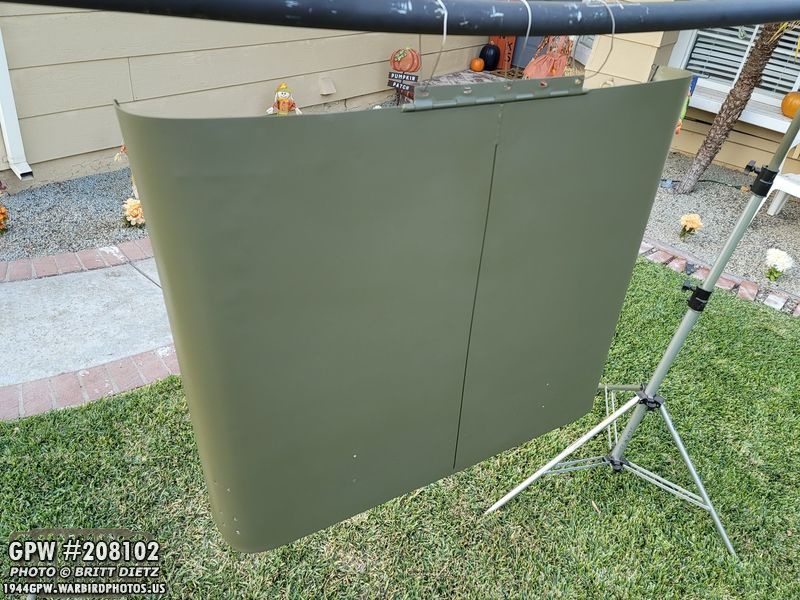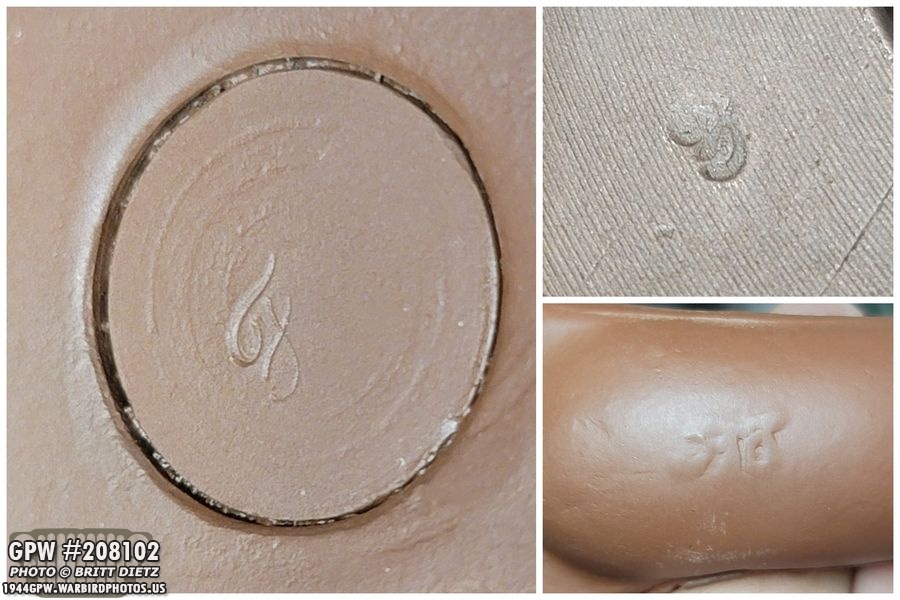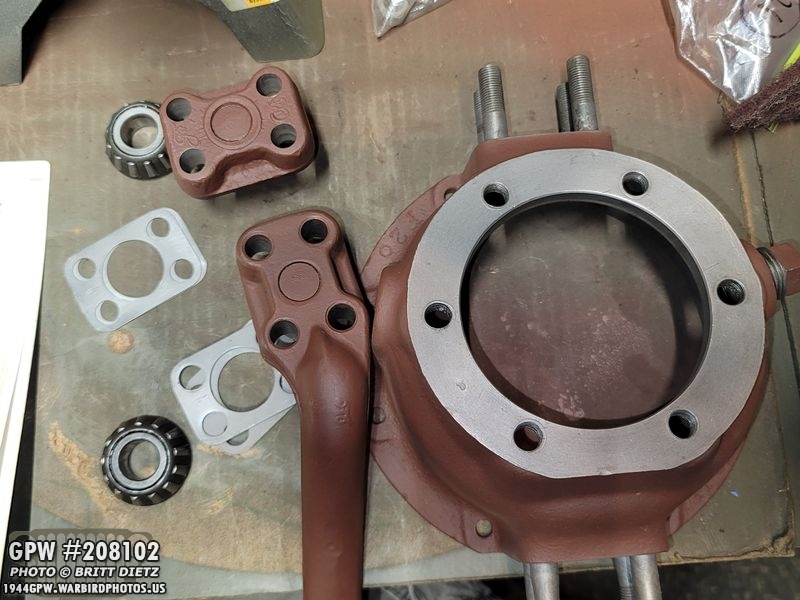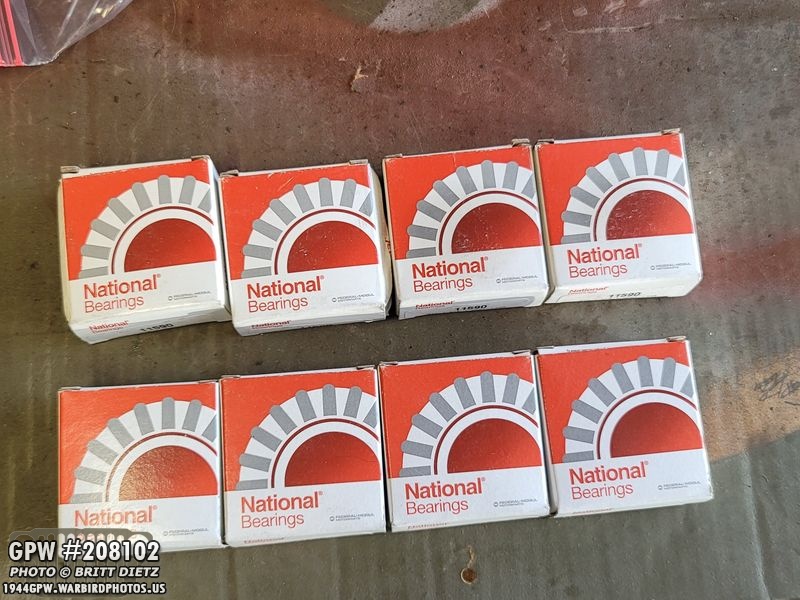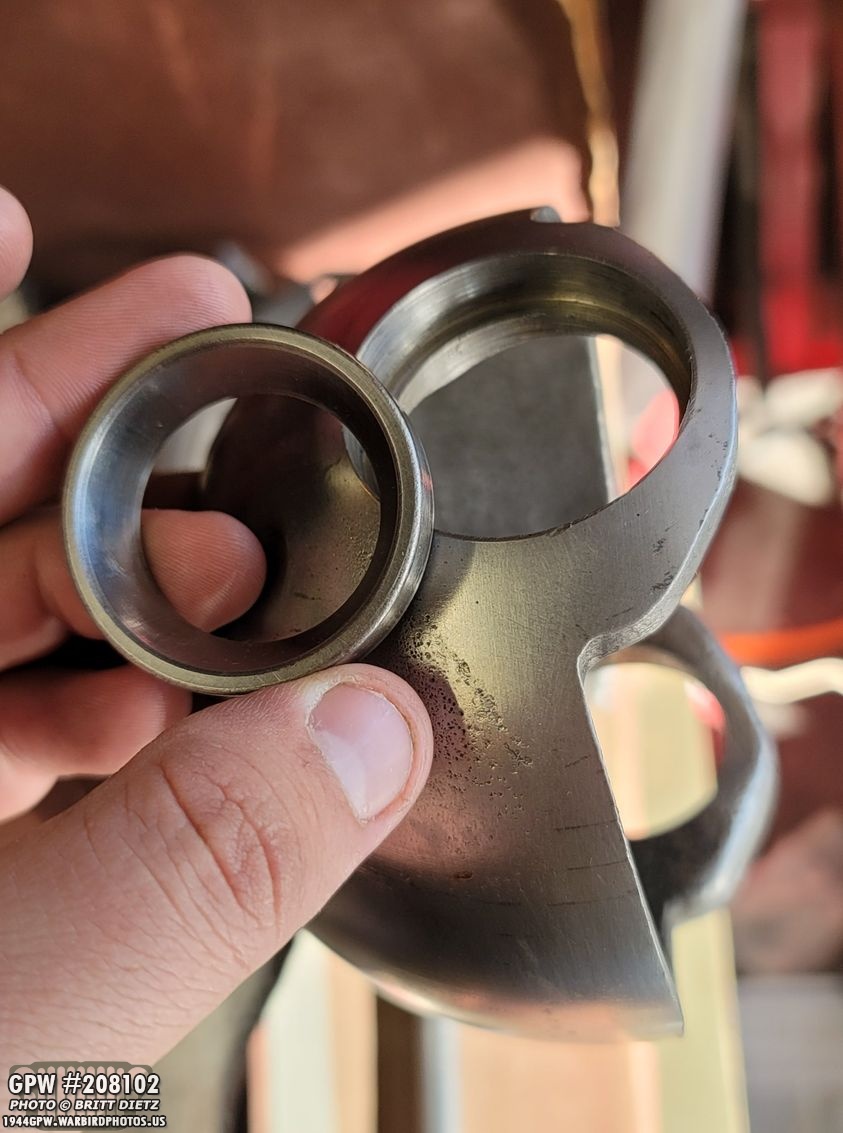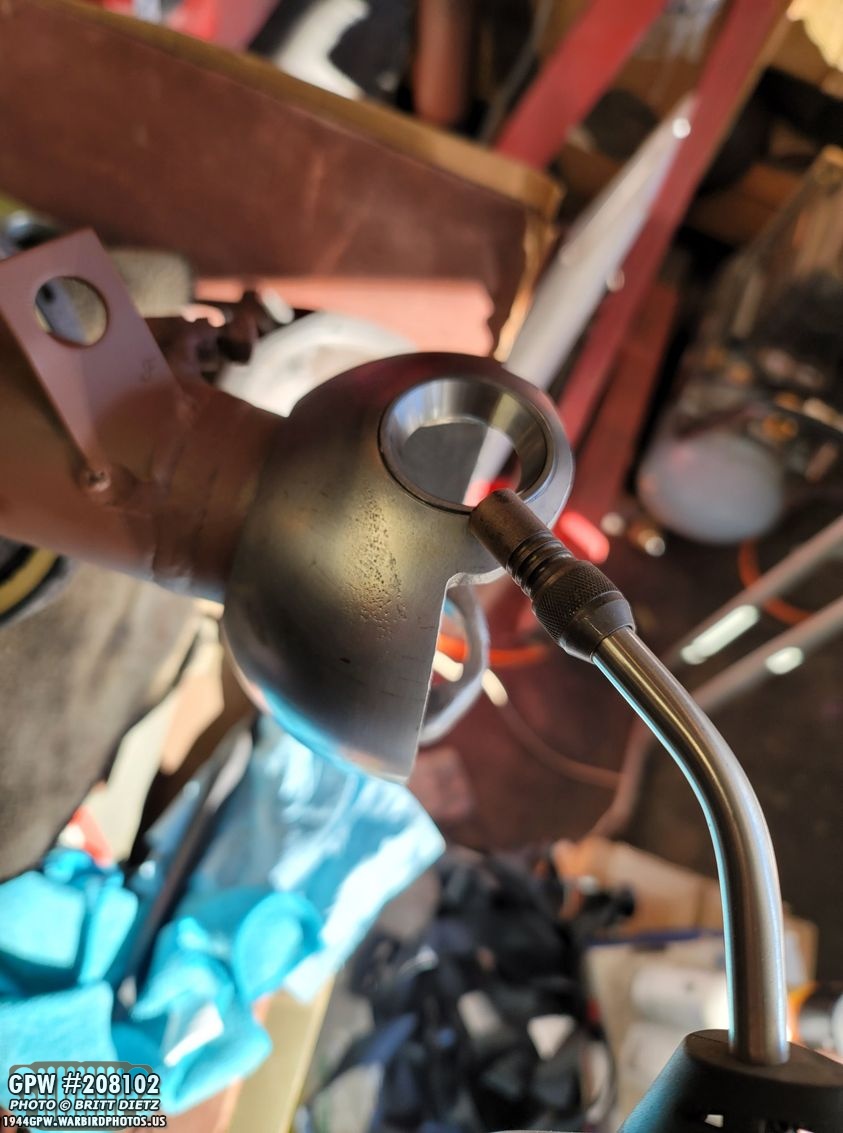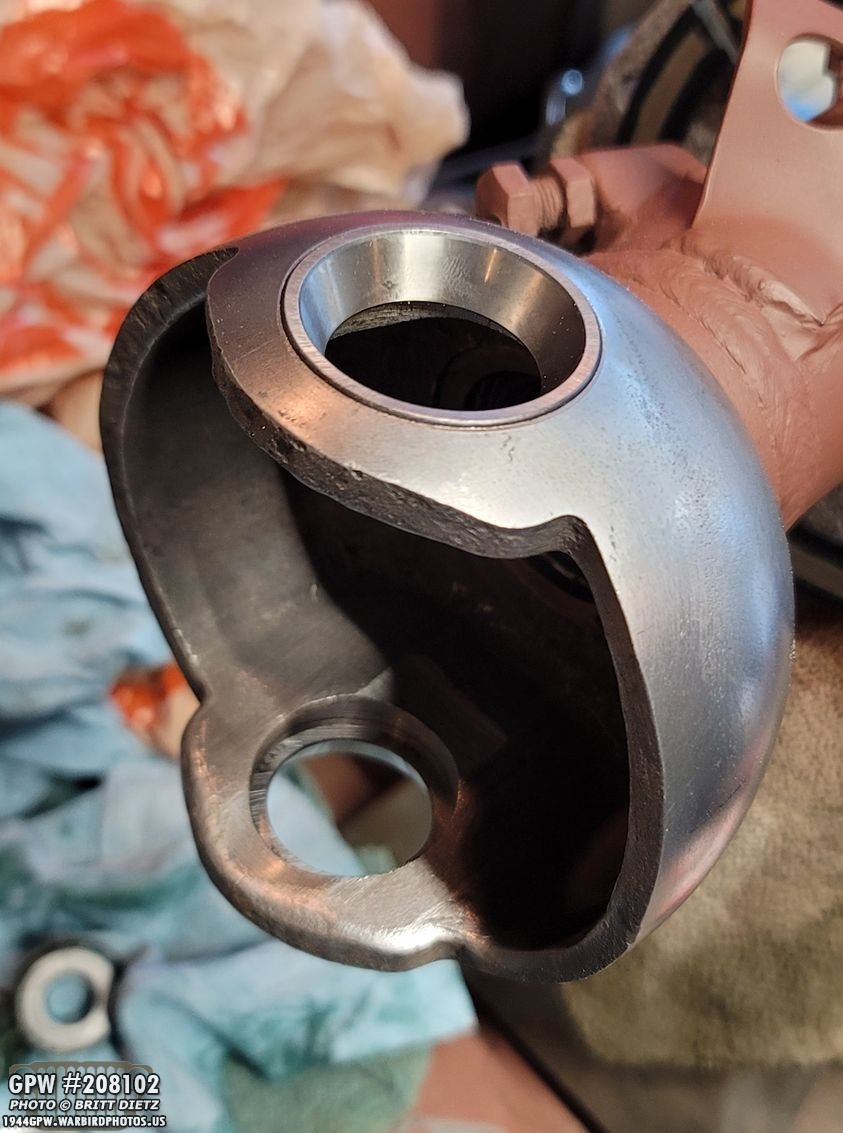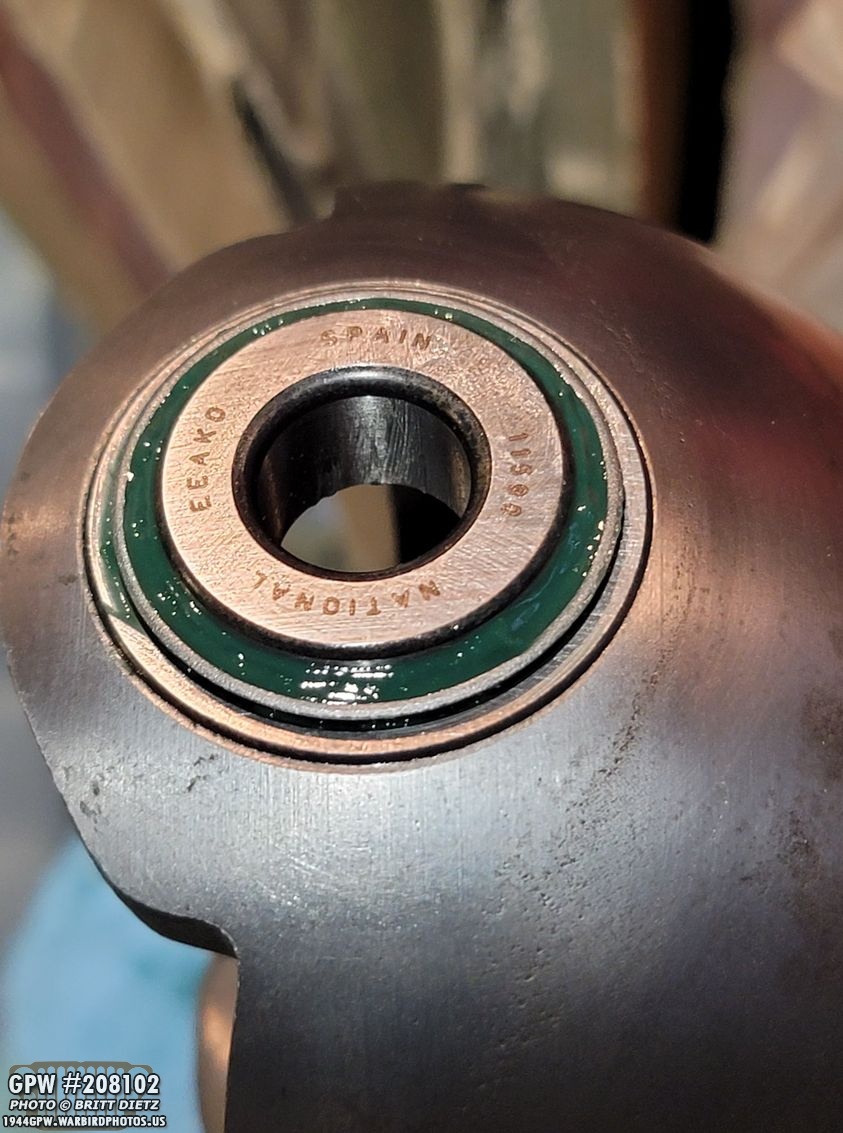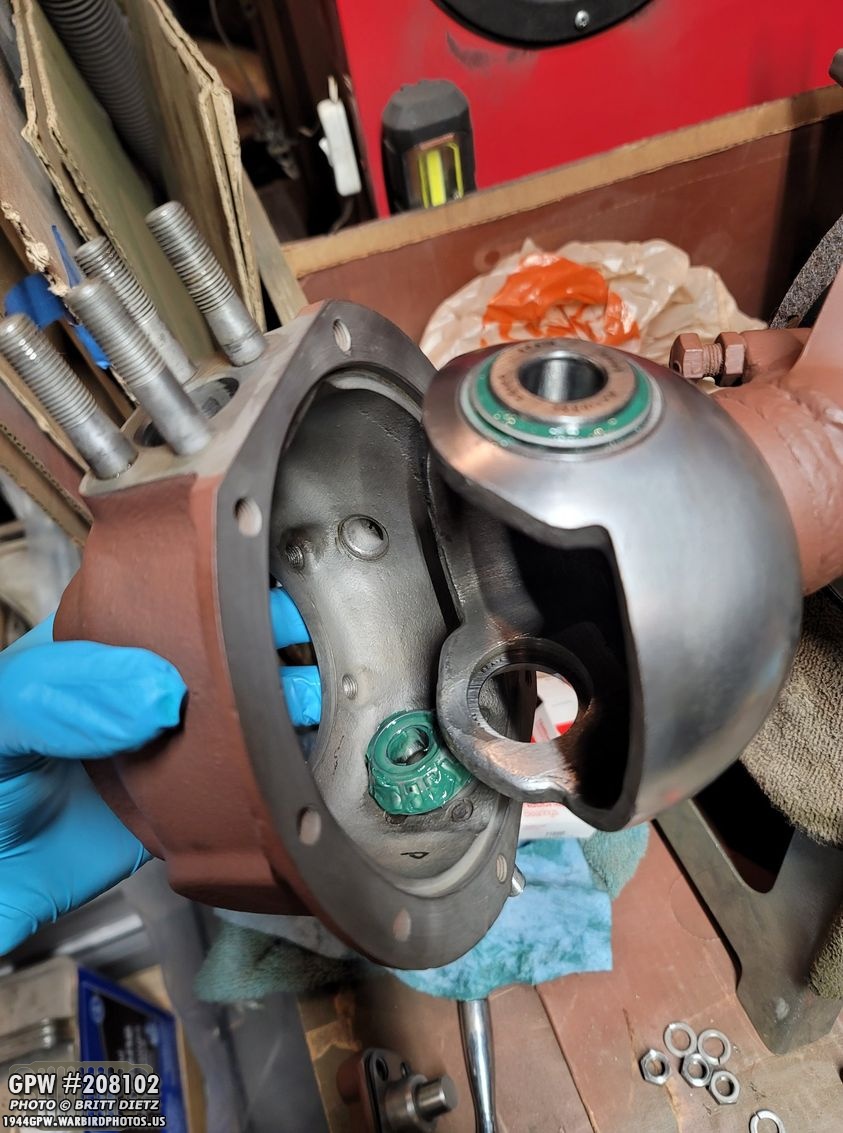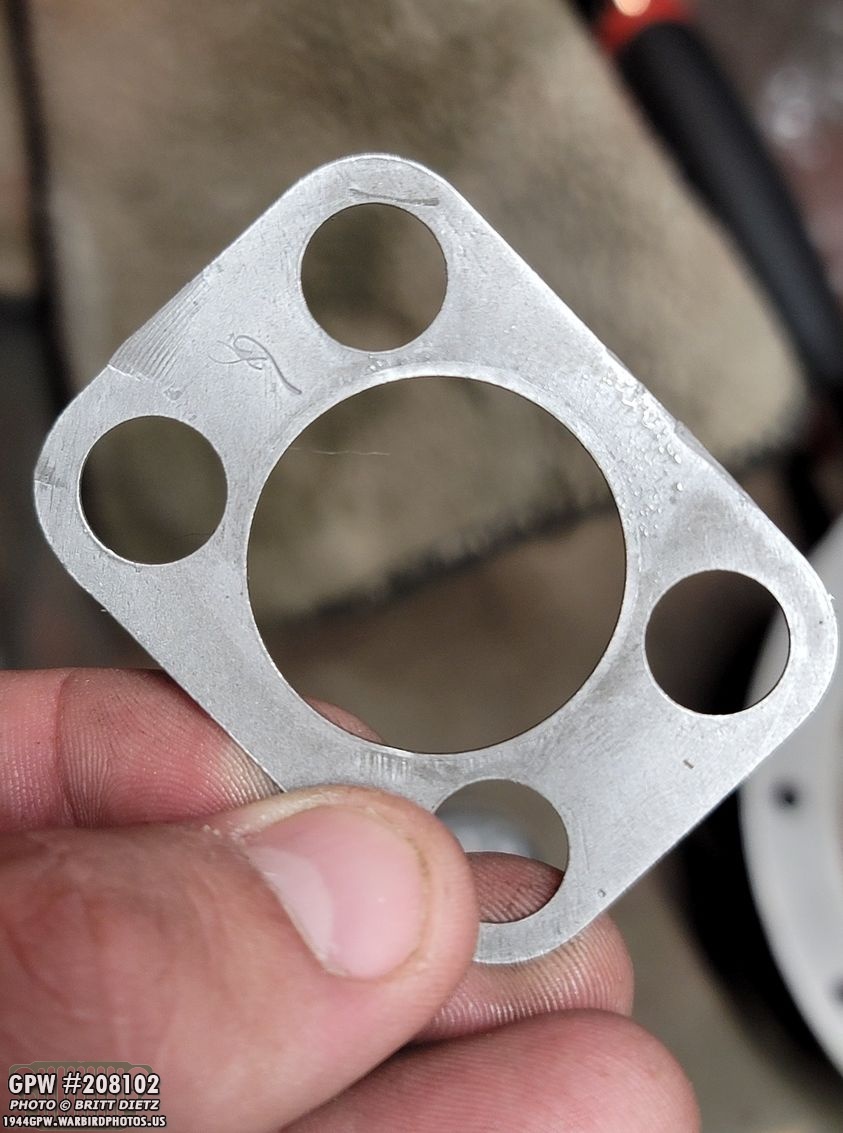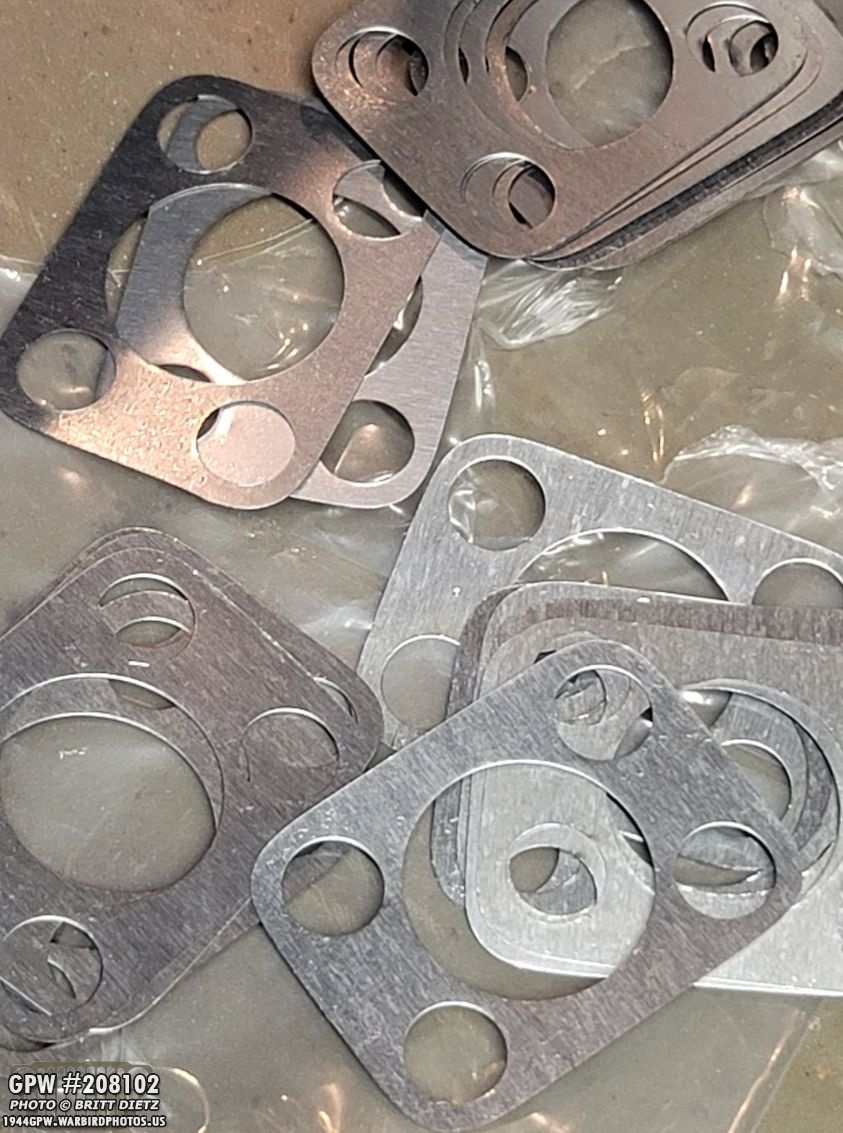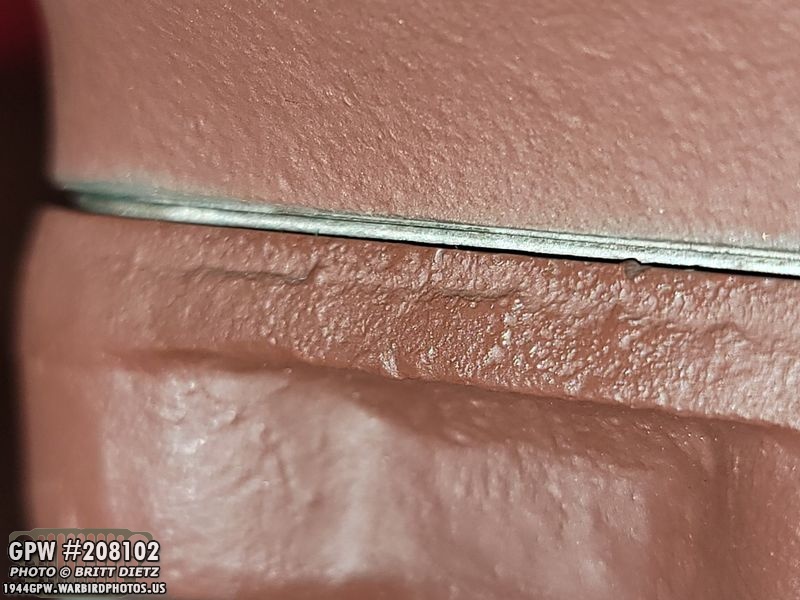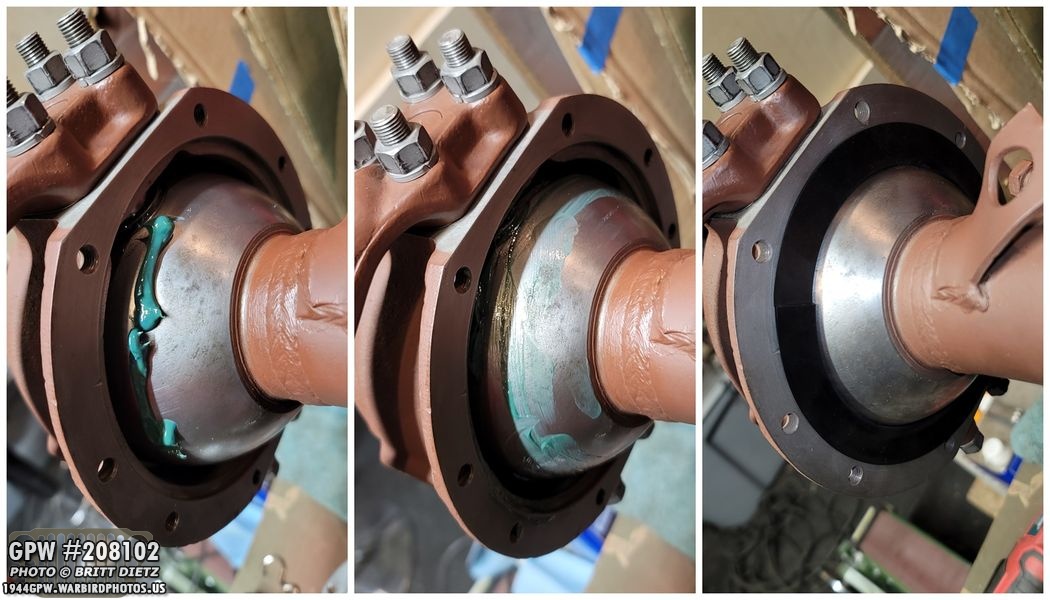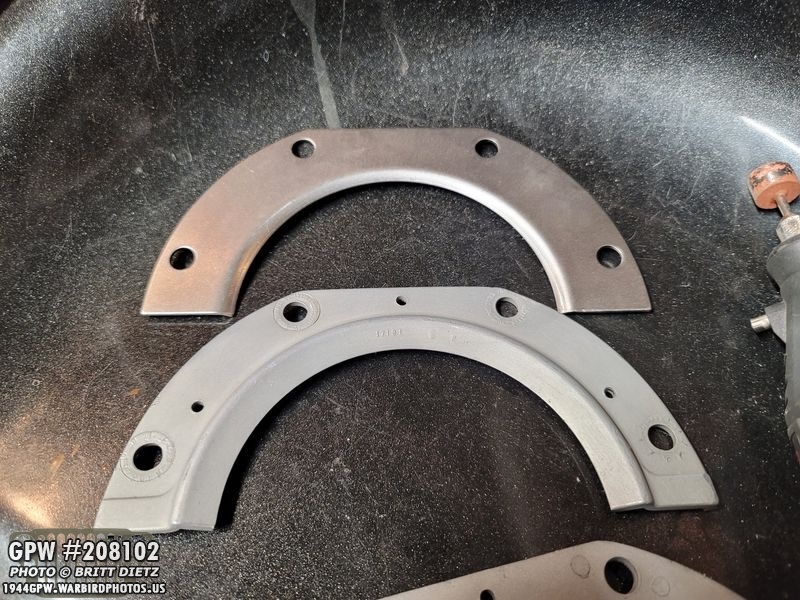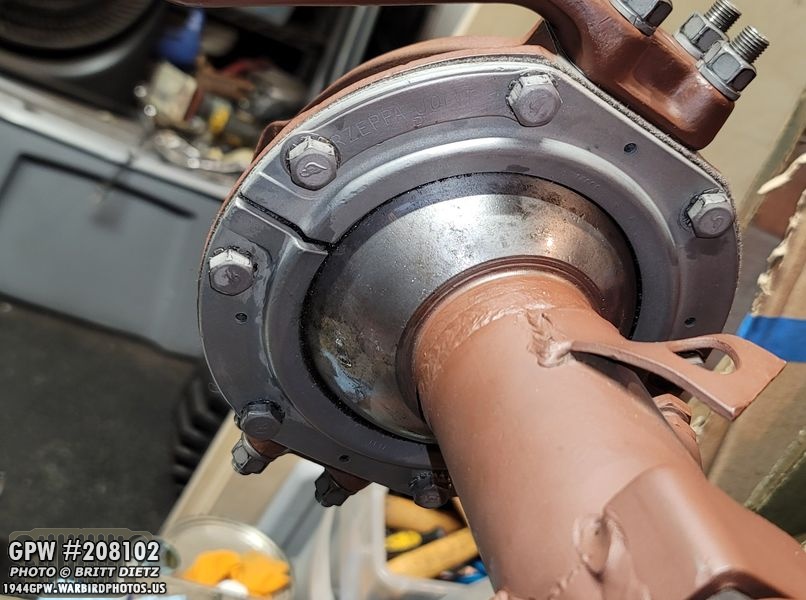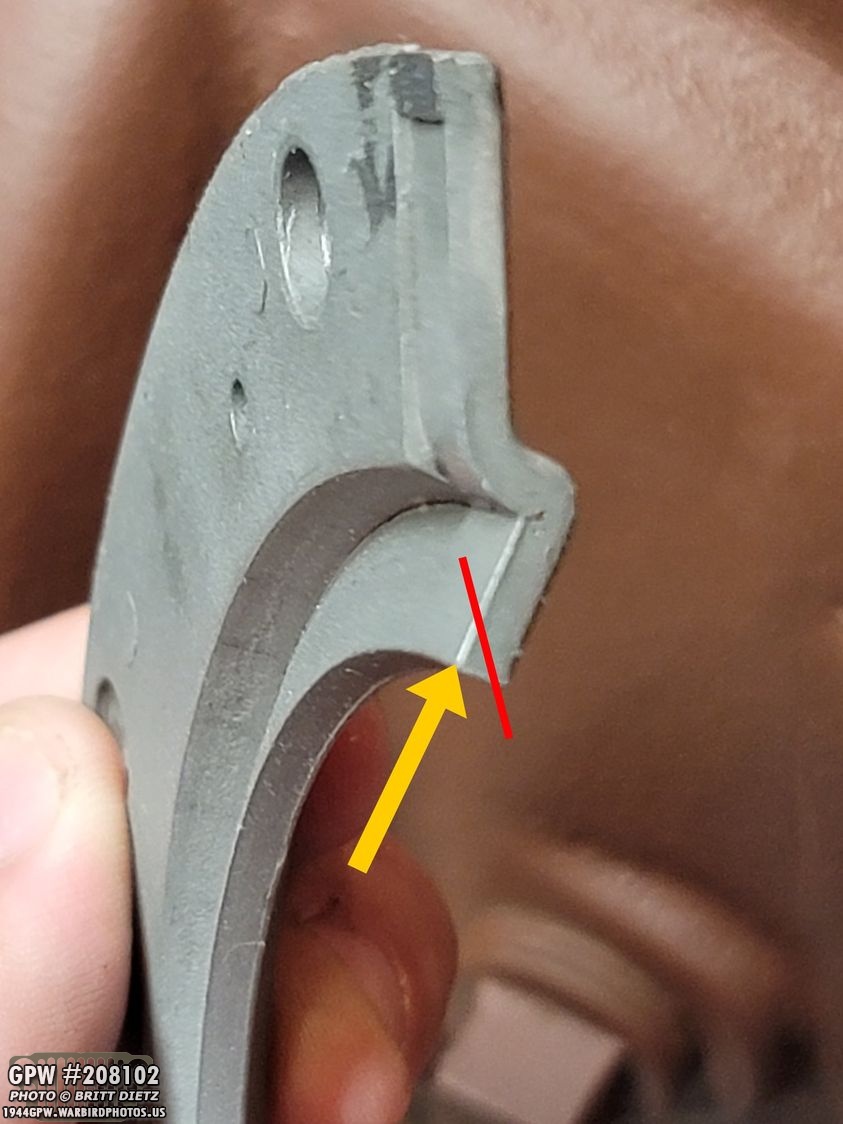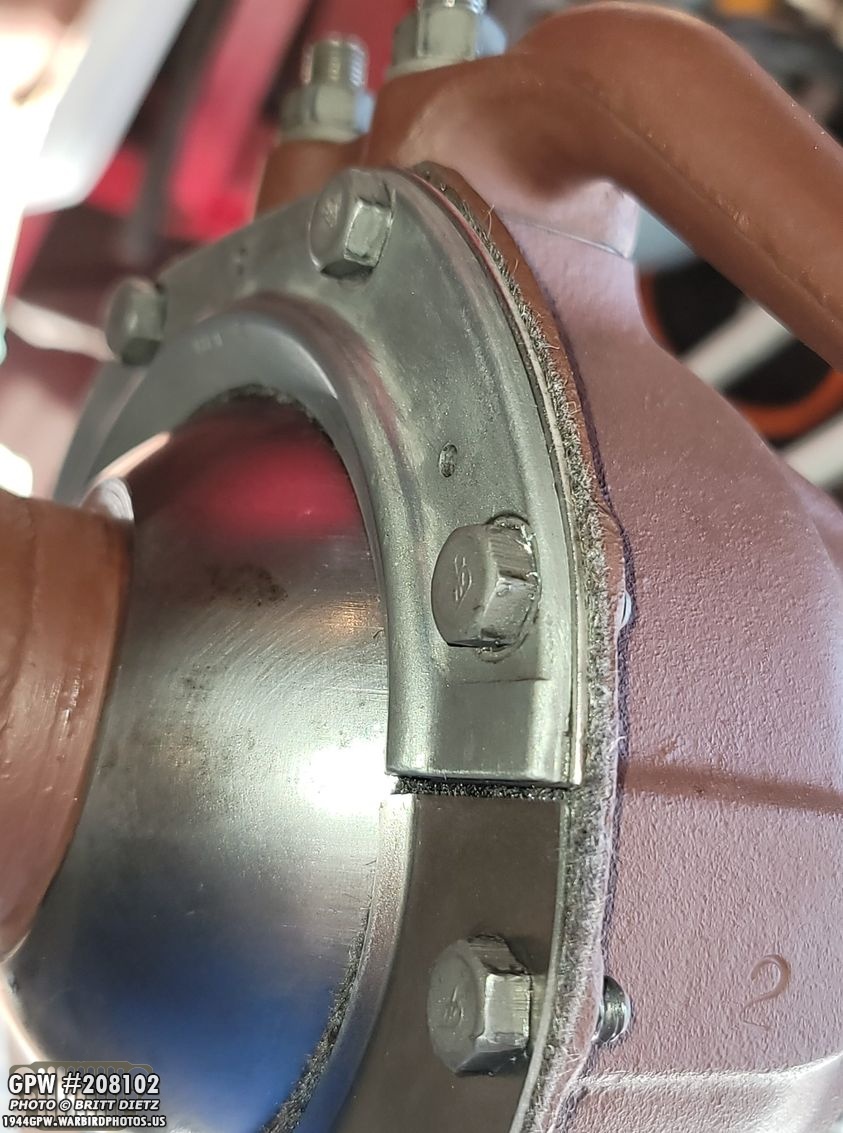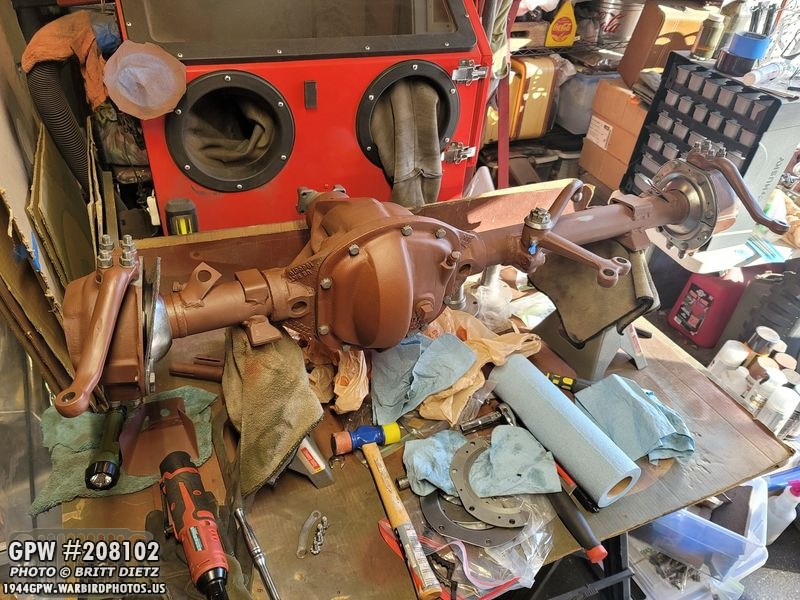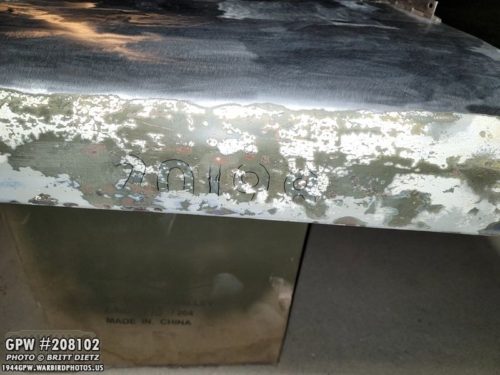 Hood history, painting along with kingpin/knuckle work!
Hood history, painting along with kingpin/knuckle work!
This week was a crazy busy week with work on two major ongoing projects.. the GPW hood and the GPW front axle! This week I continued work removing paint and rust on the hood, did some historical recovery of hood numbers, and painted the hood. After finishing the rear axle last week, I began work on the front axle with one of the more tricky parts… the kingpin and knuckle installation. I go through a full tutorial on how to set those along with the dust shields!
Another busy week has gone by with work continuing on the last two (of three) major projects left on the Jeep. Here she is at dusk after a quick drive around the neighborhood. I’ve been trying to drive her at least once a week if not more, but it’s been tough with all the projects!
First, let’s tackle the hood. Here’s how it looked last week. Short recap: My original hood was too damaged and warped to repair. It will be a wall decoration. I currently have an MD Juan hood on the Jeep, but recently I got this (what I thought to be) early original GPW hood that I’ve been slowly repairing and removing paint/rust.
I fixed a major crack in the hinge (like brand new now), and the other major issue is where the middle channel meets the side hinge on the passenger side. The spot welds had come lose and the lower channel had cracked all the way through. Top row… 1) After a successful button weld to get the channels to be back attached to the hood, I tried some quick spot welds to hold the crack together, that didn’t work. 2) So I did some welding work but that middle channel is so thin, it’s hard to weld because it blows through like tissue paper. To make matters worse, after I had welded it (lightly), put some JB Weld on it and bondo, the hood fell over on accident and cracked everything. UGH.Bottom Row… So, I took my time and slowly built up metal, and when the thin channel would blow out, I’d just continue to build the weld until it would connect to something. It took a long slow time, but I eventually got it. 4) It’s REALLY hard to grind/smooth that area because of the tight corners and unique shape, so I did the best I could and put some JB Weld steel on to sand it smooth to fill any imperfections.
After sanding, here’s what it came out to look like. Pretty good considering, and MUCH stronger! There’s some bondo on it that I hadn’t yet sanded smooth when I shot this, but I think, especially for a total newbie at welding, it came out not too bad.
I also used this rachet to pull the ends of the hood together a bit has it was flaring out a bit too much. In hindsight, I should have just left it as is because I think that caused some stress cracks. Easily fixable, but still extra work.
Here’s an example of one stress crack. But in these three photos, it was an easy fix, weld, grind, smooth.
Now, as I had mentioned in the past, I wanted to get the original hood numbers for fun, if they were there. I’m using my Jeep’s numbers, but for historical reference, I wanted to try and get them via wet sanding… but as you can see, above all the WW2 paint is this super super thick (and hard as a rock) white paint. It’s made any sanding very difficult.
On the other side, a lot of the paint was flaking away, so I tried to use a sanding pad to flake it off. I was able to just make out some blue numbers, which I outlined with the sharpie.
20198 on this side. Sadly, everything past the 8 was too surface rusted for me to see anything but little portions of the numbers. But this was good enough for me to have a reference place for the other side, which was still entirely covered with the white paint.
Here’s a close up showing the faint white paint outlined with the sharpie.
I was titering on the edge of giving up and just removing all the paint as trying to recover these numbers were stalling me finishing this hood. So I decided to cheat, since I was going to give up otherwise, and used my nylon wire wheel to try and get through the thick paint. Problem is, I had to be VERY careful, as once the wire wheel got through the thick white paint, it would almost instantly go through the wartime paint and straight to the metal. UGH. So I lightly did it as best as I could to help me out and give me a better starting place, because even 60 grit sandpaper was not getting through that white paint.
Just to give you an idea how thick it is, look at the super thick layer.
With that as a starting place, I started using 220 and 1000 grit sandpaper and slowly sanded away any residual paint. For the longest time, it looked like I wasn’t going to get anything.
But then, I started to see something… faint blue and the ghost of number… 8!
Then a 2, and a 3, then another 8!
I went the other direction and found a 9, 1, and possibly a 0. Since I knew the other side had 20198, I was pretty certain the number would be 20198238
Sure enough, I found the first 2.
And here’s the entire number confirmed… 20198238! I posted about it online a few days ago, and Tom Wolboldt hit it out of the ball park with his amazing data saying it was probably built in Dallas, TX, with a serial number around 95XXX (the X could be any number), and possibly a date of Feb 3, 1943! Pretty cool to know some history of the hood. I wonder where the Jeep is in this world.
Later that evening, I went ahead and started to remove the paint as close as I could to the numbers.
The hood was almost done at this point, just the side number areas remain. You can see my little grids I did removing the paint in sections with the abrasive wheel. It’s tedious, that’s for sure. And again, WEAR A RESPIRATOR!
Finally, all that was left was the numbers. I wish I could have saved them under the paint, but with that thick white paint there in areas, it would be uneven. So I took some last photos, took a deep breath, and got to work.
About 15 minutes later, the hood was now devoid of all paint. I didn’t like having to remove the numbers, but at least I have the photo documentation.
The next day, it was time to prep for priming! This included a rubbing alcohol wash and blowing it with compressed air.
If you remember from two updates ago, I had put this hood, as a test, on my Jeep to make sure everything fit. While doing that, I also painted some white water-based acrylic paint on the grill bond straps, closed the hood and pressed down, then opened it so I could have marks of where the hood straps would contact the hood. That way I could make sure to mask off an area of the tinning.
Using those paint smudges as a reference, I went to work making sections of blue painter’s tape to cover the area. Here I’m measuring using a piece of painter’s tape.
I then took more painter’s tape, put it on wax paper, and drew out 1 inch by 1.5-inch rectangles, which I would use for the hood tinning.
I also did 1 inch by 1 inch squares for the capture nuts on the channel as they had tinning smears on them as well. Here’s the top squares, and the bottom rectangles all masked off. I will remove these after the last coat of OD Green, then I’ll clean off the white paint marks.
With that, it was time for primer! I used &Ron Fitzpatrick Jeep Parts Red Oxide Barrier III primer in the 1 gallon form (as I figured trying to prime this with the spray paint would take forever and more than the one can I had at the time). The instructions said no thinner needed, but I found it was coming out terrible, so I ended up thinning it anyway. Sadly, one of the things about using matte paint is you see many of the imperfections. I noticed, right away, some sort of warped line (fold mark?) that I would need to address. It was slightly raised, and it’s possible I did that when trying to bend in the ends of the hood. It’s tough to tell, because you can’t see these things easy when it’s all metal.
So I went down to Harbor Freight and got a dolly/hammer set to pound some of the imperfections as best as I could. I was able to pound some of the divets/bumps flat, and I was able to reduce that fold line, but it just wouldn’t go away completely.
Remember that hat channel I welded earlier? Look at it now all painted! SO MUCH better!
And here’s the F stamp painted. It was bringing through some weird lines around the F stamp, so I sanded the primer smooth and that removed those lines.
After sanding the areas where Iused the hammer/dollys to reshape imperfections, it was time to put another primer coat on.
After that, I used a scotch pad to ‘rough up’ the primer in prep for the OD Green. (keep in mind this was over the course of a few days).
And here it is with two coats of 33070 OD Green! Again, I used the &Ron Fitzpatrick Jeep Parts 1 gallon paint for this. You can still see some imperfections, like where the channel is, but I just couldn’t get rid of those.
And here’s a look inside! Looking nice and uniform. And this is where the story of the hood will end for this week. In the next day, I’ll add the hood blocks, catches, etc. before I put the final third coat of 33070 on.
Moving on to the front axle! Last week I had just gotten started on adding the bell crank (not shown). I was anxious to get to work on this.
I wanted to get started on the knuckles, and that meant getting the blue painter’s tape I’ve had on the knuckles since I primed them off. I have to say, I did a good job putting the painter’s tape on. It was a pain to get off!
With the paint off, and using the TM manual, I went to work gathering my original parts for reinstallation.
I wanted to document some of the F stamps as some will be hidden or hard to see. On the left is the kingpin cap center bolt. Top right is the spindle edge of the knuckle. Bottom right is the faint F stamp and 5 on the upper kingpin arm.
And the other side knuckle…
With F marked shims, the kingpin cap, and the same kingpin cap bolt.
Originally, I was going to use my original kingpin bearings, as they were in great shape. As I started to install things after packing the bearings, I noticed they had points of wear only noticeable under load, so I decided to get all new ones. So as I waited, I used a punch to get the original cups/racers out of the knuckle ball. Both the top and bottom one.
It took a few days, but I got a new set of kingpin bearings and cups from @[92559608347:274:RockAuto.com]. I went with National brand.
Time to install the cups!
I found adding some heat to the cups helped them to go in super smooth. I used my torch to lightly heat them up as I was putting them in.
Using a plastic/rubber hammer, I was able to easily seat them all the way to the lip. Nice and snug!
The lower one was harder to get in (as I couldn’t swivel the axle), but I made due and got it in. Here you can see the lower cup resting all the way on the lip of the ball.
With both installed, it was time for the bearing!
I talked about packing bearings in a previous update, but I figured I would go over it again with more photos. It’s not fun, and really really messy. Use disposable gloves, as grease will get EVERYWHERE.
First, get a glob of grease in your hand. Take the bearing, and hold it so the more open side of the outer cage is at the bottom. Then slap it down on the grease over and over. Keep doing this until you see the grease oozing through the other side (yellow arrow), then rotate the bearing and continue the process until it’s oozed out the entire way around. The bearing will get covered with grease eventually once you finish.
Now you can place the bearing in the cup!
Before you put on the knuckle, if you’re using the modern dust shield kit (which I’ll cover a bit later), make SURE you put the felt gasket and the rubber seal on BEFORE you put the knuckle on.
With the bearing in the top cup, put the other bearing (packed with grease) on the inside bottom of the knuckle, as shown. This way you can just slip the top over the top bearing, and it will all be lined up with the bottom bearing in the bottom cup.
And the same way with the other side, shown here.
Before you can install the kingpin arm and cap, it’s time to talk about shims. Here’s an original F marked shim. Shims raise and lower the kingpin items from the knuckle, causing more of a load and less of a load depending on how many shims there are. More shims = less load, less shims = more load. More load means it’s tighter and takes more effort to turn the knuckle.
You might need a lot of shims, you might need only one. Probably not no shims, but your mileage may very. I started with the original F marked shim and the three smaller non-marked ones that were originally on the passenger side.
I also bought a shim kit from Ron Fitzpatrick Jeep Parts, which they all come in .007 thickness.
Here’s a look at the kingpin arm bolted down with the shims between it and the knuckle. In the next few steps, I’ll talk about how to adjust it and how to test what is right and wrong. The bummer part is that each time you need to change something, you have to take off both the top kingpin arm and the bottom kingpin cap (somewhat see it at the bottom)
Here’s a look at how the shims look when the kingpin arm is installed. I know it sounds funny that something so thin can make that much of a difference, but it honestly does.
Here’s a look at the other side with the top kingpin arm and a much better view of the kingpin cap at the bottom. Both have the SAME amount of shims on them. That is important.
What you’re trying to do is set the tightness of how that knuckle turns (which in turn will be connected to your wheel. The idea is that if it’s too loose, your wheels will wobble at the slightest thing which can be dangerous in many ways. Too tight, and you will have a hard time steering. To test this, I went the old fashion route using a luggage scale. Once you add the shims, torque down the kingpin arm and cap, you set the knuckle to neutral (as if the wheels were pointed straight), attached the scale, and pull. Read the number as it goes up, and the number it hits when the arm finally releases and starts moving is the resistance. The book says between 4 and 8. Roger Smith recommended much higher, between 7 and 9. In the photo here, you can see there’s 1.24 pounds of force on the arm at this moment and it’s not moving still.
When I initally did the test, the passenger side was giving me about 2.5, and the driver’s side was giving me about 4.5. So I would need to take away shims from both to make them tighter.
What’s crucial is that whatever you take away or add MUST BE DONE to the bottom as well. Both the top and bottom MUST have the same amount of shims to keep the spindle centered. So, if I take away 1 shim from the top, I need to unbolt the bottom cap and take the same 1 away. It took a LOT of time bolting and unbolting, removing/changing shims, but I eventually got both of them to be about 7.5/8 pounds when pulled.
Next up, installing the dust shield setup! I put some grease around the ball where the new modern dust shield will go so it would lube it up. I then pressed it in as best I could (it only partially went in, it’s super tight) and cleaned up the excess grease outside on the ball. If the dust shield doesn’t go in for you, just get it at least partially, and you can use the caps to push them in once you bolt them.
Next up, I was told it was a good idea to oil the felt so it won’t rip. Rather than make a mess dipping the entire thing in oil, I just used a paint brush, some axle oil, and painted the inner part of the felt seal on BOTH sides. I did two passes to make sure the oil absorbed.
Now, the modern seal replacements come with an outer cap plate that looks terrible, in my opinion. It’s plain and lacking any detail. In this photo, the top is the modern cap, the bottom is the original. The originals were actually two pieces of metal with felt in between them and no rubber shield. The original caps can slip apart into two pieces, an inside and an outside. This is important as we’re going to try and use the original outer halves instead, but with the modern felt and rubber seal!
To show the difference, on the left is what the new modern seal caps would look like installed, and on the right is what the originals look like. Pretty big difference. Many people don’t really care and just use the new ones, but I wanted the original look still.
First, in order to use the original outer halves, you musta remove the little tap at the end on both sides. Easy to do if you have a belt sander.
Here’s the top and bottom original outer halves with the tabs removed.
I went ahead and installed them over the felt seal and the rubber shield. So far so good, until I tried to turn the knuckle. It was stuck. It would NOT move. Uh oh. So I unbolted the 8 bolts on the caps just a little… the knuckle started moving again. UGH.
I went to the other side, installed it all… SAME problem. The knuckle won’t move with the bolts tightened down. The clearance between the ball and these caps must be so small, it’s choking the felt seal and causing it to lock. I talked with Roger Smith on the phone about this, and he mentioned he’s done this and had to do additional modifications to the original outer caps.
He found that he had to take them and ground down the inner lip (yellow arrow) all the way around until it is instead at a slant, like the red line.
I decided to do one side first, and went to work grounding down that lip all the way around. It’s a bit of a guessing game on how much you need to remove, and I ended up removing quite a bit. At least 3/16. I put it all back on and tightened it up… no go. UGH! Still locked.
I talked again with Roger Smith and we brainstormed. He thought, what if you use the modern ugly metal cap underneath the original? Since the original cap has two halves, it was pushed away from the ball, and now without that back half, it was too close. But, I realized the upward slanted lip of the modern cap would clash with the downward lip of the original. So he said, why not grind off the lip on the modern caps? So I did just that going from the red arrow to the yellow arrow. Putting the modern cap with the original cap, you can see the two angled edges have a gap now, so they won’t interfere with each other.
So, I put it all together, and SUCCESS! The bolts can tighten all the way and the knuckle still moves! And the felt is still held in place by the modern cap under the original one. So, moral of the story is… if you want to use the cheaper modern dust shield kit with the original caps… you don’t need to modify the original caps other than removing the tabs. Take the modern caps, grind down the upward lip till the lips don’t clash, and it will work!
I went ahead and ground down the modern cap lips on the rest and fitted the original havles on top. Everything worked great.
With that working, it was time to take my original RZeppa Joint axle tag and put it on!
Here it is installed in the same spot it was originally!
And while I did get more done on the axle this week, I’m going to wait till next week’s update to cover those items (like adding the RZeppa shafts, packing grease in the knuckle, adding the spindle, etc). Also, excuse the mess, as you can see, when you’re deep into knuckle work, the work bench gets messy!
And that’s it for this week’s update! Look for the last touches of paint and hardware on the hood, prepping for the new numbers and star. Plus lots more front axle work and some other small projects! Till next week….

